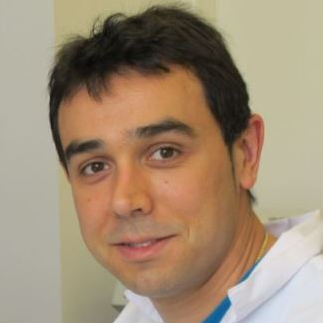Dietary Bioactive Compounds and Breast Cancer
A special issue of International Journal of Molecular Sciences (ISSN 1422-0067). This special issue belongs to the section "Bioactives and Nutraceuticals".
Deadline for manuscript submissions: closed (1 September 2021) | Viewed by 23123
Special Issue Editors
Interests: food and health; bioactive compounds; polyphenols; cell culture and animal models; clinical trials; cardiovascular; cancer; inflammation
Special Issues, Collections and Topics in MDPI journals
Interests: polyphenols; in vitro; in vivo; pharmacology; eicosanoids; inflammation; cardiovascular; health; bioactive molecules
Special Issues, Collections and Topics in MDPI journals
Special Issue Information
Dear Colleagues,
Breast cancer is the most common occurring cancer and one of the leading causes of cancer-related death in women worldwide. Over 80% of cases are non-hereditary, and therefore, modifiable extrinsic factors related to lifestyle, including dietary habits, play a key role in its prevention. Plant foodstuff is the most important source of bioactive compounds, including polyphenols, carotenoids, phytosterols and others, that have been reported to exert anticancer effects by playing a broad range of pleiotropic multi-targeted activities on breast cancer cells and animal models. Although many epidemiological and observational studies have inversely correlated the fruits and vegetables consumption with breast cancer incidence, the involvement of their phytochemicals remains still contradictory. Over the past decades, wrong approaches without considering their bioavailability and metabolism have been behind the current gap between preclinical and clinical research.
Therefore, this Special Issue of International Journal of Molecular Sciences will publish original research and review papers on the chemopreventive and/or chemosensitization effects to breast cancer of dietary bioactive compounds and/or derived metabolites using physiologically relevant preclinical (cell and animal models) and clinical approaches, that could elucidate if they are responsible for the effects attributed to plant-based foods.
Dr. Antonio González-Sarrías
Dr. Juan Antonio Giménez-Bastida
Guest Editors
Manuscript Submission Information
Manuscripts should be submitted online at www.mdpi.com by registering and logging in to this website. Once you are registered, click here to go to the submission form. Manuscripts can be submitted until the deadline. All submissions that pass pre-check are peer-reviewed. Accepted papers will be published continuously in the journal (as soon as accepted) and will be listed together on the special issue website. Research articles, review articles as well as short communications are invited. For planned papers, a title and short abstract (about 100 words) can be sent to the Editorial Office for announcement on this website.
Submitted manuscripts should not have been published previously, nor be under consideration for publication elsewhere (except conference proceedings papers). All manuscripts are thoroughly refereed through a single-blind peer-review process. A guide for authors and other relevant information for submission of manuscripts is available on the Instructions for Authors page. International Journal of Molecular Sciences is an international peer-reviewed open access semimonthly journal published by MDPI.
Please visit the Instructions for Authors page before submitting a manuscript. There is an Article Processing Charge (APC) for publication in this open access journal. For details about the APC please see here. Submitted papers should be well formatted and use good English. Authors may use MDPI's English editing service prior to publication or during author revisions.
Keywords
- breast cancer
- chemoprevention
- plant foods
- phytochemicals
- phytoestrogens
- polyphenols
- bioavailability studies
- clinical trials
- animal and cellular studies
- anti-cancer mechanisms







